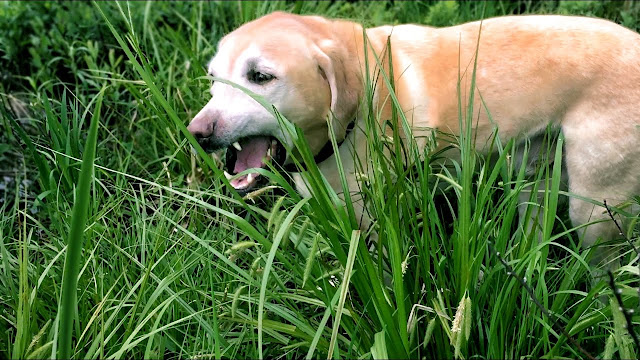dog whining and eating grass
Why do dogs whine?
Dog whining is a common behavior that can have various meanings. It is important for dog owners to understand the reasons behind their pet’s whining in order to address any underlying issues. Dogs may whine to communicate their needs, express anxiety or fear, seek attention, or signal discomfort or pain. Additionally, puppies often whine as a way to express their frustration or inexperience.
Dog whining at night
Many dog owners struggle with their pets whining during the night, which can disrupt sleep patterns for both the dog and the owner. There can be numerous reasons why a dog whines at night, ranging from separation anxiety to discomfort or needing to go outside to relieve themselves. It is important to establish a consistent bedtime routine, provide a comfortable sleeping environment for the dog, and rule out any medical conditions that may be causing the whining.
How to stop dog whining
Dog whining can be a frustrating behavior for owners, but it is important to approach it with patience and understanding. Here are some tips to help stop dog whining:
- Identify the cause: Understanding why your dog is whining is the first step in addressing the behavior. Is it due to anxiety, fear, hunger, or some other reason?
- Provide comfort and reassurance: Sometimes dogs whine simply because they are seeking attention or reassurance. Give them love and affection when they are calm and quiet, not when they are whining.
- Ignore the whining: If your dog is whining for attention, it is important not to give in immediately. Wait for a moment of silence before providing attention, so they learn that whining does not result in immediate gratification.
- Train with positive reinforcement: Teaching your dog basic obedience commands, such as “sit” and “stay,” can help redirect their attention and provide them with a sense of structure and security.
- Consult a professional: If your dog’s whining persists or becomes excessive, it may be beneficial to seek guidance from a professional dog trainer or behaviorist. They can assess the situation and provide personalized advice.
How to prevent dogs from eating grass
Grass eating is a common behavior among dogs, but it can sometimes lead to digestive issues or the ingestion of harmful substances. Here are some strategies to prevent dogs from eating grass:
- Ensure a balanced diet: Dogs may eat grass to compensate for nutritional deficiencies. Ensure that your dog is receiving a balanced diet that meets their nutritional needs.
- Supervise outdoor activities: Keep a close eye on your dog when they are outside and redirect their attention if they start eating grass. Encourage them to engage in other activities, such as playing fetch or interacting with toys.
- Provide mental and physical stimulation: Dogs may eat grass out of boredom or to alleviate stress. Make sure your dog has plenty of opportunities for exercise, play, and mental stimulation.
- Remove access to toxic plants: Some plants can be toxic to dogs if ingested. Remove any potentially harmful plants from your yard and keep your dog away from areas where toxic plants grow.
- Consult a veterinarian: If your dog’s grass-eating behavior is excessive or accompanied by other symptoms, it is best to consult your veterinarian for a thorough examination. They can rule out any underlying medical conditions and provide appropriate advice.
Dog whining and discomfort
Dogs may whine when they are experiencing discomfort or pain. It is important for dog owners to be aware of the signs of potential discomfort and address them promptly. Some common causes of dog discomfort include:
- Injury or illness: Dogs may whine to alert their owners of pain or discomfort caused by an injury or illness. It is essential to monitor your dog’s behavior and consult a veterinarian if you suspect an underlying health issue.
- Anxiety or fear: Dogs that are anxious or fearful may whine as a way to communicate their distress. Providing a safe and secure environment, as well as training and socialization, can help alleviate these issues.
- Environmental factors: Changes in the environment, such as extreme temperatures or loud noises, can cause discomfort and lead to whining. Ensuring your dog has a comfortable and stress-free environment can help reduce whining.
- Aging and arthritis: Older dogs may develop arthritis or other age-related conditions that cause discomfort. Providing them with appropriate pain management and comfort measures can make a significant difference.
Dogs eating grass: Is it normal?
Grass-eating behavior in dogs is considered normal to some extent. Dogs have been observed engaging in this behavior for various reasons, including instinctual behaviors passed down from their wolf ancestors. However, if the grass-eating becomes excessive or is accompanied by signs of distress or illness, it is important to investigate further.
Potential health risks of dogs eating grass
While grass itself is not typically harmful to dogs, there are some potential health risks associated with grass-eating behavior:
- Ingestion of toxic substances: Grass may contain pesticides, fertilizers, or other chemicals that can be toxic to dogs if ingested.
- Gastrointestinal issues: Some dogs may develop digestive problems, such as vomiting or diarrhea, after eating grass. This can be due to dietary sensitivities or an inability to digest grass properly.
- Intestinal blockage: In rare cases, grass-eating can lead to an intestinal blockage if the grass forms a wad or gets tangled in the digestive tract. This requires immediate veterinary attention.
See also: senior rescue doesn’t play with toys
Understanding dog whining
Whining is one of the many ways dogs communicate with their owners and express their emotional state. It is important for dog owners to learn how to understand their dog’s whining in order to provide the appropriate care and support. Here are some key points to consider:
- Context: Pay attention to the context in which the whining occurs. Is the dog seeking attention, expressing discomfort, or trying to communicate a specific need?
- Body language: Dogs often use body language to convey their emotions. Observing their posture, tail position, and facial expressions can provide valuable clues about their whining.
- Consistency: If your dog’s whining behavior changes suddenly or becomes more frequent, it may indicate an underlying issue that should be addressed.
- Individual differences: Each dog is unique, and their whining habits may vary. Understanding your dog’s individual habits and preferences will help you interpret their whining more accurately.
Conclusion
Whining is a common behavior in dogs, and understanding the reasons behind it can help owners address any underlying issues. Whether it is related to discomfort, anxiety, or simply seeking attention, it is important to approach dog whining with patience and compassion. Similarly, while grass-eating behavior is normal to some extent, it is crucial to monitor it and ensure it does not pose any health risks to your beloved pet. By being attentive to your dog’s needs and providing appropriate care, you can help them lead a happy and healthy life.
Greetings from the Petworled website management, we wish you success and see you in another article on our website.













